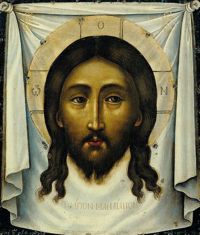Iconoclasm
 From Conservapedia
From Conservapedia 
Following the Reformation, Protestant and Puritan reformers in the 16th and 17th centuries also engaged in iconoclasm, believing religious imagery to be idolatrous and sinful.
Iconoclastic controversy[edit]
In either the year 726 or 730, Emperor Leo III banned all images of Christ that showed him in human form. The Iconoclasts argued that any image depicting God in human form either omits His divine nature or confuses it with His human nature.
The Seventh Ecumenical Council (787) defended image veneration believing that to venerate an image is to venerate not its substance but the shared likeness. An icon of Christ affirms the reality of the human and the divine.
In the year 843 icons and their veneration were restored on the first Sunday in Lent. This Sunday is referred to as the "Sunday of Orthodoxy".[1]
See also[edit]
Image-breaking Riots
References[edit]
- ↑ Greek Orthodox Archdiocese of America
Categories: [Christian History] [Christian Theology]
↧ Download as ZWI file | Last modified: 02/19/2023 02:11:49 | 11 views
☰ Source: https://www.conservapedia.com/Iconoclasm | License: CC BY-SA 3.0
 ZWI signed:
ZWI signed: KSF
KSF